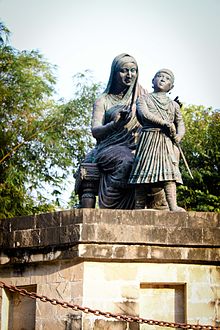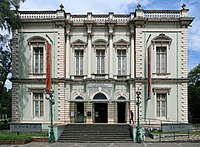|
Jijamata Udyaan
Jijamata Udyaan, also known as the Byculla Zoo and formerly Victoria Gardens, is a zoo and garden covering 50 acres located at Byculla, in the heart of Mumbai, India. It is the oldest public garden in Mumbai.[3] After Indian independence, it was named after Jijamata, the mother of Shivaji, the first Maratha emperor. In 1835, British administration granted a large plot of land in Sewri to the Agro Horticultural Society of Western India for a botanical garden known as Victoria Gardens after Queen-Empress Victoria. That land was later acquired for a European burial ground.[4] In 1861, construction of a new garden was commenced on 33 acres in the Mount Estate, Mazgaon (now included in Byculla). The flora from Sewri garden was transferred to this new garden named Jijamata Udyaan which was formally opened to the public by Lady Frere on 19 November 1862. Agro Horticultural Society of Western India continued to maintain Victoria Gardens until 1873 when the society's end led to the municipal corporation taking over the garden's upkeep. In 1890 the garden was extended by 15 acres especially for the zoo.[3] The garden also houses the Dr. Bhau Daji Lad Museum, a staff building in Greco-Roman style erected in the memory of Lady Frere, and an equestrian statue of King Edward VII of England made of black marble (originally installed near the University of Mumbai) known as Kala Ghoda and the David Sassoon clock tower.[4] UpdatesJust before few months 3 crocodiles and 2 alligators have been kept in these enclosures. A viewing gallery of approximately 1,500 square feet size has been set up in the zoo and from this platform, tourists and commoners can observe them on surface and underwater movements of the reptiles. A Japanese and butterfly garden are also recently opened, with snake and lion enclosures opening soon. Wikimedia Commons has media related to Jijamata Udyan.
Notes
External links |
||||||||||||||||||||||||||||||||||||||||||











